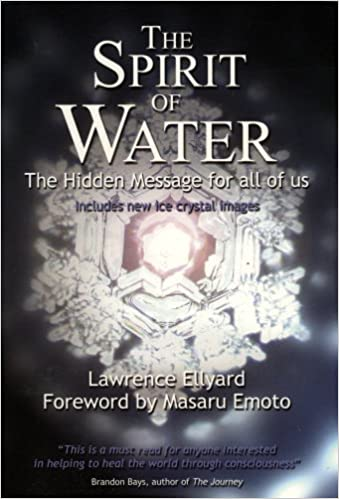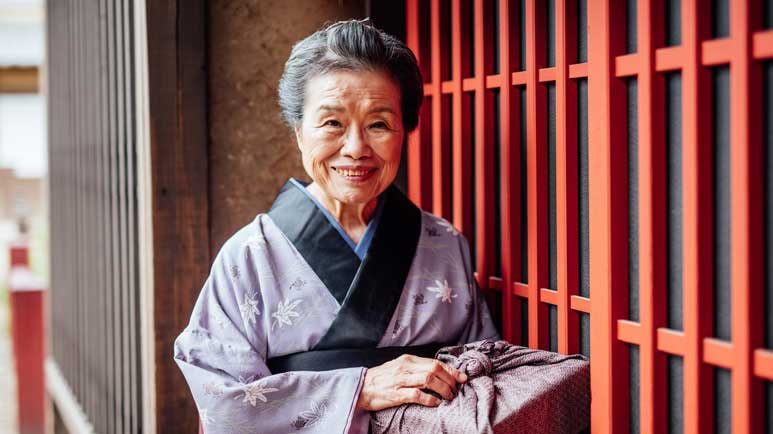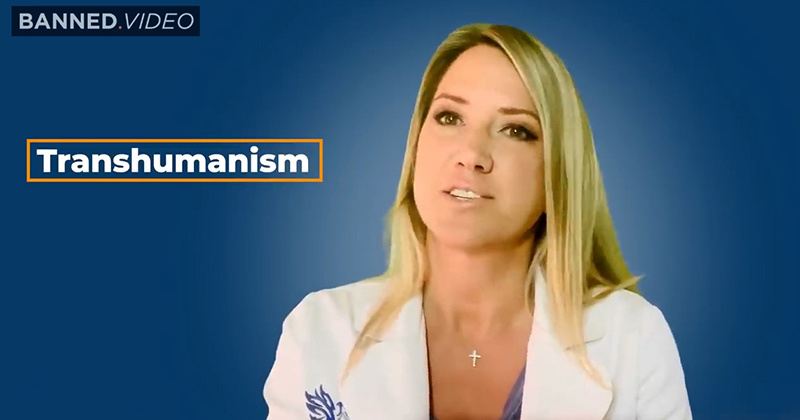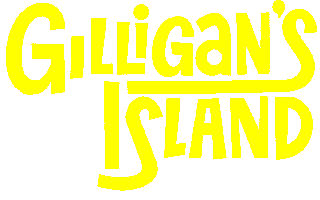
By Elyse Dupre
The YouTube community has lost a beloved member, Melanie Ham.
Melanie Ham, DIY YouTube Star, Dies at 36
Melanie Ham, a beloved 36-year-old DIY YouTube star, died on Jan. 12 after her battle with cancer. Ham had nearly 1 million subscribers on YouTube and posted weekly videos full of helpful tips and tutorials for knitting, quilting, crocheting and more. Her husband, Robert Ham, confirmed the news on Instagram, writing in part, ‘She loved passionately, created beautifully, provided abundantly and was my best friend all the way to the end.’
She was open about her cancer journey.
Melanie had a hard-fought cancer battle, and she was open with her fans every step of
the way. She initially details her health struggles in a 2019 blog post, where she revealed that doctors discovered a mass on one of her kidneys in Dec. 2018. She got surgery that removed her left kidney, the mass and two lymph nodes. All seemed well, but in Aug. 2020, Melanie revealed that the cancerous mass had returned. She said in a YouTube video that “the tumor came back in multiple locations, very rapidly.”
Melanie later revealed that her official diagnosis was Epithelioid Angiomyolipoma.
From there, Melanie continued to keep her fans updated as she fought the cancer.
In an October 2021 update, she revealed she underwent surgery five months prior that was successful, but the cancer continued spreading. Melanie’s intense chemo caused her to lose her hair. “We’re always trying to stay optimistic that this will be the treatment that works, but the truth is there is no clear path on how to battle this,” she said in her final health update, “so we’re just gonna keep fighting.”
A Celebration of Life will be held for Melanie.
In the wake of Melanie’s passing, a Celebration of Life is planned for Saturday,
January 29 at 11 a.m. at Crossroads Community Church in Valencia, California.
A post from Melanie’s Instagram said that “colorful attire” is encouraged. Cards and flowers can also be sent to the church to honor Melanie. For fans that wish to participate, they can livestream the event at www.lifeatcrossroads.org/eventstream.
YouTube Star Melanie Ham Dead at 36 After Cancer Battle (msn.com) The social media star’s husband Robert announced “with a heavy heart and deep sadness” that his “sweet, amazing, beautiful wife Melanie” died on Jan. 12 following her battle with cancer.
She was 36 years old.
“If you’ve been following our journey, I’m sure you were, like us, hopeful she could
defeat this insidious disease,” he wrote in a Jan. 12 Instagram post.
“Over the past few months things have been progressively getting worse and we’re thankful that we made it to this point through the holidays and tried to make every moment count.”
Robert revealed that Melanie passed away just nine days before their 16th anniversary. “My family, our doctors, our nurses and especially Melanie fought until the end and did
all we could do to avoid today, but that is not our path,” he continued. “Let me reassure
all those rooting for us, Melanie fought like a warrior queen.”
Celebrity Deaths: 2022’s Fallen Stars
During her lifetime, Melanie created crochet, quilting, sewing and DIY tutorials via her YouTube channel, where she’d accumulated about 811,000 subscribers, and her blog.
In his message, Robert described Melanie as someone who “loved passionately, created beautifully, provided abundantly and was my best friend all the way to the end.”
At the end of his post, he asked her followers to “hug those you love today, put up a toast
of Bourbon (her favorite, that she hasn’t partaken in during her journey) and say a prayer” for their two “beautiful, strong children.”
In December 2018, doctors discovered a mass on Melanie’s left kidney. She had surgery the following week, she explained in a 2019 blog post, in which she had her left kidney,
the mass and two lymph nodes removed. Afterwards, she learned the tumor was benign.
But in August 2020, she shared with her followers that the mass had returned.
“So, it was a benign mass,” she said in a YouTube video at the time, “but now it’s not.”
As she wrote in a blog post, the “tumor came back in multiple locations, very rapidly.”
Melanie said she had an Epithelioid Angiomyolipoma or PEComa, which she described as part of the “Sarcoma family of cancers” and “very. very rare.” She continued to keep fans updated on her surgeries and cancer treatment.
Her last health update post was in October 2021.
“Back in May you might remember I had a surgery. The goal was to be tumor free, and
the procedure was a success at the hands of my amazing surgeons,” she wrote at the time. “We were very happy with the outcome…. but only 5 weeks after surgery I had new symptoms and after a scan, we discovered that the cancer spread and had become very aggressive… again.”
Melanie described the news as “another one of those gut punches” but didn’t lose hope.
“The next best option was to try and get things under control, so we immediately started
a harsher chemo regimen,” she wrote. “So, in June, I started a drug combo that made my hair fall out and have some of the ‘chemo’ side effects I had so far been able to avoid.
That was a really hard moment for me. Robert shaved my head and we just cried together. We were of course hopeful that this chemo would work but after a few rounds we scanned again, and the chemo wasn’t doing a darn thing – all the cancer was still progressing. Another gut punches.”
She noted she “switched chemo drugs” at the end of August and after experiencing
“Some complications” in September was “doing much better.”
“We’re always trying to stay optimistic that this will be the treatment that works, but the truth is there is no clear path on how to battle this,” she wrote, “so we’re just gonna keep fighting.”
A celebration of life for Melanie will be held on Jan. 29.
An Update on My Cancer Journey (16 Years and Counting!)
Crazy Sexy Cancer – YouTube
About Kris Carr | #1 NY Times Author, Activist & Cancer Thriver
Kris Carr: Crazy Sexy Entrepreneur – The New York Times (nytimes.com)
This is a deeply personal blog. In it, I’m sharing an important health update, as well as some hard-earned tips for how to navigate the fear of medical tests and scan anxiety. Though this post is specific to my cancer journey,
these tools can be applied to lots of other scary shit pickles.

A few months ago, I realized that I was overdue for my 2-year CAT scan, blood tests and visit with my oncologist. My first thought was: “Damn it! I don’t have time for this. I’m just too busy.” But I quickly realized that “I’m too busy” is an affirmation. It sends a message to my body that I’m not a priority, my health isn’t important, and neither is my life.
That message certainly isn’t in alignment with my love for myself or my health goals—I needed to flip the script, posthaste!
So, I quickly reached for better thoughts by telling myself that my health and safety
are my top priorities, and that nothing would get in the way of me taking care of myself. Then I made self-care accountability a topic on a recent Wellness Wednesday live broadcast. I asked for you to hold me accountable for making and going to these extremely important appointments.
Pssst… I also encouraged you to schedule any health check-ups you’ve been blowing off. Have you done that yet, dear one?
Something I didn’t share during that Wellness Wednesday is that I was very anxious
about that appointment. Maybe my heightened emotions were influenced by the fear
I have around my dad’s journey with pancreatic cancer and how helpless I feel at times.
Or maybe it was because I’ve been feeling some new pains in my rib cage, which had me wondering if my disease had finally spread to my bones. Or perhaps it was that strange lump in my arm that was secretly freaking me the F out.
Or maybe it was that I’d just agreed to some exciting opportunities this fall, and in the back of my mind I was afraid that my disease had finally woken up and become aggressive. That would mean pressing pause and putting my full focus on my health—again.
As you can tell, there’s been a lot of uncertainty swirling around in my mind.
While I’m skilled at staying grounded and not catastrophizing, these symptoms and fears put my practice to the test!
That’s the thing about being a cancer patient. Every little ache, pain or sneeze can
send you into a tailspin of sweaty worry. And when that happens, we need tools to help diffuse those emotions before they totally take over and spread like a nasty contagion. So, here’s what
I did to calm myself down, return to my center and connect with my heart.
When I got to the Dana-Farber Cancer Institute.
(The self-care accountability did help!), I hunkered down in the public bathroom
(a spiffy place, by the way!) and did two things.
First, I looked in the mirror, stared deeply into my own green eyes and with all the compassion I could muster, I said:
“I love you. I’m here for you. Whatever happens, we’ve got this.
We’ll figure it out. I’ve got your back and I always will. I love you.”
Deep breath… And another… And yet another.
I kept breathing and repeating those words over and over again until I could feel the butterflies (no, more like gassy dragons!) in my stomach calm down. And they did.
Second, I started to make a mental list of all the things that are right with me.
Sure, I have dozens of tumors in my lungs and liver, a weird pain in my ribs and a strange lump in my arm, but there are so many parts of me that are working exceptionally including those that are struggling. This simple exercise brought me back to a place of gratitude for all that is working in my life. And when you’re in gratitude, it’s harder to be in anxiety.
The next time you feel out of control or like the floor is about to fall out from under you, try these tips. They may seem hokey or woo-woo, but believe me, these little exercises are powerful soul medicine.
Ok, and now for the news: All is well. Cue the band!
The lump in my arm is a harmless fatty tumor, there’s nothing going on with my rib cage (looks like I pulled a muscle while using my favorite workout app—no further metastasis, I’m just out of shape, lol), and the tumors in my liver and lungs are still stable. Deep sigh… I’ve been living with this strange stage IV sarcoma for more years than I thought I would, and all truly is well.
But there’s more! My oncologist felt confident enough to suggest that I could
come back in 3-5 years (I’ve been going every 2 years or more since getting diagnosed).
What?! That’s like a lifetime to me. I never thought he’d say something like that or that
I could experience that much time (and freedom) between hospital visits. Tears…
In his words, “we’re just thrilled.” After comparing 16 years of scans, the consensus is that even though I still have cancer, I’m well enough and it’s indolent enough to give me more breathing room—and I’ll gratefully take it.
Epithelioid Angiomyolipoma versus Kris Carr.
Plus, I also learned that there’s a clinical trial underway for my disease (epithelioid hemangioendothelioma). The first of its kind. So that’s some potential progress for my rare sarcoma and all the patients who live with it—some of whom have a more aggressive form.
I can’t tell you how happy I am to share this news with you all, especially those of you
who have followed my journey since the beginning. Though I don’t write about cancer as much as I used to, it’s still always in the background of my mind and it always will be.
It continues to teach me, and I continue to define myself by my values, desires, goals and love—not cancer.
Join me on social media!
I share simple ways you take impeccable care of yourself—body, mind and soul. Instagram and Facebook.
I did a Wellness Wednesday episode on this topic and shared more tips for dealing with health anxiety—
check out the replay here!
Thanks again for supporting me, friends. And don’t forget to make your well-
being a priority. Book those doctor appointments and do whatever else you need to do.
The world needs you (and so do I).
Peace & deep gratitude,

Kris Carr – Bing video
P.S. Need more help dealing with stress and anxiety?
These simple grounding exercises will help you return to your center when
you feel out of control or like the floor is about to fall out from under you.
I swear by my meditation practice because it helps me stay present and access a feeling of safety when anxiety rears its ugly head. Grab my album, Extraordinary Meditations for a Magnificent Life, to start a grounding, stress-busting practice of your own.
Long COVID-19: Study author explains four factors that can predict how you get it (msn.com)
How Does Getting a Breakthrough Covid Case Affect My Immunity? (msn.com)
This state has the highest cancer rate in America, according to data (msn.com)
















